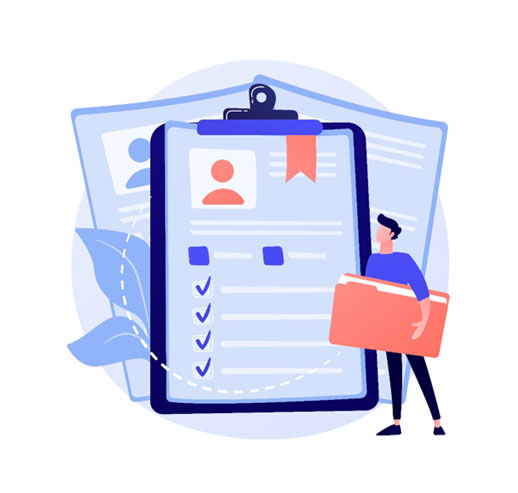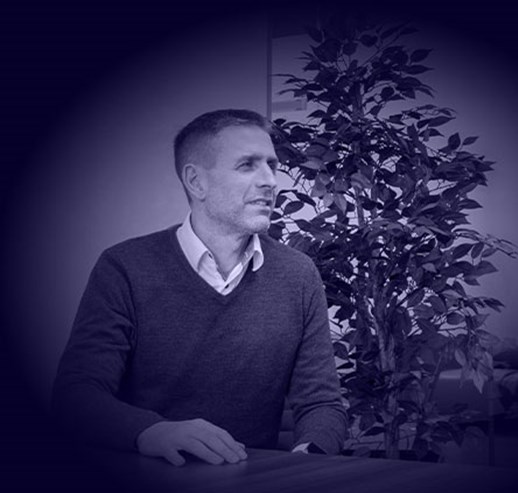

Finding the right fit for your team is crucial to ensure the success of your projects and the overall productivity of your team. But how do you go about finding the perfect candidate who not only has the required technical skills but also fits well with your team's culture and values? Couple the cost of a wrong hire with shortages of candidates across the engineering sector, it’s no wonder hiring managers are keen to get the right fit, the first time.
We've comprised this article to discuss the key steps to finding the right fit for your engineering team, from understanding the role and candidate's experience to selecting, interviewing, and onboarding the candidate effectively.
There are many components to what makes someone the ‘right’ fit, and experience can be one of them.
Before you start searching for candidates, it's important to have a clear understanding of the role you're hiring for and the type of experience you're looking for in a candidate. Only once you know what you need, can you determine what is ‘right’. There are numerous steps to this process, and below we outline some of the key processes.
Firstly, you will need to put together a comprehensive job description. It’s not enough to take a previous one and amend it with new details; each job description should be carefully crafted with plenty of consideration for every element. This means taking the time to understand what skills and experience will be required for the candidate to be successful in the role. Plenty of hiring managers fall into the trap of essentially writing a wish list, but this isn’t helpful and may in fact put people off if they don’t feel they have enough experience, for example.

Instead, narrow down five key skills or experience requirements, and clearly present them. These can then be used throughout the entire hiring journey for benchmarking, including during the interview stage. Consider the level of involvement required in the role, such as problem-solving, working in high-pressure situations, meeting deadlines, social needs, commercial experience, and communication skills.
Of course, there are numerous people involved at different stages of the hiring process, and therefore there are plenty of opinions on what is important. It’s entirely possible that someone not involved in the early stages may meet a candidate in later stages and feel they aren’t right for the role, resulting in disappointment and wasted time for everyone. To prevent this happening, gather key stakeholders early on to decipher what is important. Then, using software or a recruitment partner, you are then able to scientifically combine all the key components identified by crucial stakeholders and create a profile of the perfect candidate for the specific role.
Different engineering will have different profiles, and this is pertinent in finding the ‘right’ candidate. If, at every stage of the hiring process, a candidate matches the profile, you can be satisfied that the candidate will be the right fit for you, and meet the criteria of everyone else involved.

With candidate shortages in mind, hiring managers can’t just expect the perfect person to reach out to them. Instead, you might need to do some sourcing of your own – but there is plenty of help on hand.
There are numerous platforms, means and avenues hiring managers can use to find engineering candidates, from traditional methods of job adverts, recruitment companies, industry events, and referrals, to techniques such as social media, online CV databases, and online groups. By doing some research yourself, you may find candidates with prior experience you require, a keen interest in the area of expertise, or someone who isn’t even actively looking!
An often extremely overlooked source of new hires is within your existing team. Before looking externally for new hires, it’s worth looking internally and seeing if the right candidate is already within the company. Not only do you probably already know the person and their skills well, but they may also appreciate the opportunity to develop their role and grow within a company they are already loyal to. The ‘right’ fit doesn’t always mean ‘new’.
Once you find an avenue with proven success, you can use it again in the future. Further down in this article, we explain how to find a recruitment process that works now, and forever.
A response to a job description may be the first step in selecting prospective candidates. And it’s important that both hiring managers and candidates know what is expected of them.
Interviewing candidates is a critical step in the hiring process. In addition to evaluating a candidate’s technical skills, it's important to assess their competencies, level of interest, and engagement in the role and your company. Beyond a formal interview, there are numerous ways you can get to know an applicant, which can drastically decrease nerves, allowing you to get more out of the candidate. Consider taking them for dinner, putting on a tour of your company, or encouraging them to speak to people in your company to understand their potential fit with your team. This can help you gain insights a formal interview might not provide; you can gauge their ability to process information, provoke further thought and questions, and interact with customers and employees, which may be essential for their success in the role.
The interview itself should be heavily based on the job description you carefully crafted, measuring each candidate against the 5 key skill and experience metrics identified with the wider hiring team. Benchmarking against these requirements by asking questions around them will help you quickly sort desirable candidates from the unsuitable ones.

Job interviews typically last anywhere between 30 minutes to 1 hour, or even longer if specific tasks are assigned to candidates. It’s important to strike the right balance between long enough so you have enough time to get to know the candidate and assess their suitability and skills, while not making the process too long and overwhelming, which runs the risk of diluting the usefulness of the interview or putting a candidate off.
It's not easy to assess talent; in fact, a study by the Recruitment & Employment Confederation (REC) found that four in ten employers admit that the interviewing and assessment skills of their staff should be improved. But, this is where your overall tried and tested hiring process proves its worth.
Finally, beyond the skills and experience of a candidate, you need to understand their values, and whether they align with your company’s. You can use this time during competency-based interviews to determine someone’s values; ask questions that assess their alignment with your team's values and how they have demonstrated those values in their past experiences. Once the honeymoon period is over, it's common to lose an employee who does not align with your values, so it's crucial to assess this aspect before getting too far into the hiring process.
Candidates in the modern day are looking for more than a job and pay. While 81% of candidates surveyed for REC Future of Jobs recruitment whitepaper ranked both ‘salary and benefits’ as a major factor when choosing a job, it’s important to not underestimate the benefits elements.
Your employer branding and employee value proposition (EVP) play a crucial role in attracting the right candidates to your team. This can take many forms across various companies, whether it be in the mission and values, or the case studies of various career pathways and development opportunities. By setting an example early on and giving employees a clear view of their career pathway, you can inspire your workforce, and cultivate a motivated, loyal workforce.
Consider using briefing packs and clearly communicate your EVP to potential candidates to help them understand why your company is the right fit for them. Emphasise your company's values and how they align with your team's values. Values should be something you are willing to lose money over; toxic team members who do not align with your values can negatively impact the overall team dynamics and productivity and would therefore not be the right fit for you.
Once you have identified the right candidate for your engineering team, it's time to make an offer. You might think this is the easy part, having gone through the process of evaluating all the options and suitably appealing to your chosen candidate, however, that’s not always the case.
Be prepared for potential counteroffers from the candidate's existing employer, or for the candidate to question certain compensation criteria. The best way to prevent a candidate being swayed by their current employer is to talk to them openly and prepare them for this conversation. A lot of people might not expect a counteroffer when resigning, so may be taken aback and react in the moment, or even accept it. Therefore, by talking to the candidate, reminding them of your great offer, as well as the fact they have come this far with you as they wanted to leave their previous role, you are more likely to safeguard their future with you. They will appreciate the helping hand, and you gain a loyal employee – win, win!
To make a compelling offer, ensure that it is competitive in terms of salary, benefits, and other perks. Highlight the unique value proposition that your company offers and clearly communicate the opportunities for growth and development within your organisation. Be transparent about the expectations, responsibilities, and any other relevant details of the role. Only by being honest and genuine can you expect the candidate to do the same.

Be prepared to negotiate with the candidate, especially if they have multiple job offers or are considering a counteroffer from their current employer. Consider factors such as the candidate's experience, skills, and the market rate for similar positions when determining the salary and benefits package. Hopefully, by putting in time and effort to find the right candidate so far in the journey, you will have a good idea of what they want and how you can become the most attractive offer to them. It's important to establish your limits, though, as the right candidate will likely understand your limitations, and be able to maturely communicate with you to find a happy medium.
Once the offer is accepted, you still need to make a good impression. Be prompt in providing the necessary paperwork, contracts, and any other documentation required so you don’t leave your new employee wondering what’s next. Keeping the candidate engaged and informed throughout the onboarding process will ensure a smooth transition into their new role. And don’t forget to introduce them properly to the team – onboarding begins before the start date, and so should co-worker relationships.

The ideal fit for your engineering team is one that remains the perfect match, even years down the line. Maintaining a good relationship with employees requires you to provide opportunities for growth and development, recognise their achievements, and foster a positive work environment.
This can be done by offering training and educational programs, setting clear goals and objectives, and providing regular feedback and performance evaluations. It's also important to provide competitive compensation and benefits packages and to promote work-life balance.
As for working as a team, effective communication, collaboration, and trust are key. Clear roles and responsibilities should be established, and each team member should be held accountable for their contributions.
Encouraging open and honest communication and providing opportunities for team-building activities can also help foster a strong team dynamic. Regular check-ins and evaluations can also help identify any issues or areas for improvement and allow for timely course correction. The ideal fit for you should be an ideal fit for your team as a whole.
Making one right hire is a great achievement, but don’t just leave it there. In order to ensure you continue to make great hires for your company, you need to establish an effective recruitment process you can rely on in the future.
You can do this by adopting previous processes that have worked, or even by trying new techniques within the industry; those who move with the times will continue to appeal to future workforces.
A good place to start is by reflecting on previous hiring processes and identifying what went well, what didn’t, and where improvements could be made. The benefit of continually reviewing and improving your hiring process is that you gather more candidate information each time, and therefore have a pool of potential future hires to hand a virtual bench programme. Instead of being reactive with candidate requirements, proactively engage with potential candidates even when there are no immediate openings.

This way, when an opening appears, you already have a pool of potential candidates to choose from, saving you time and money in the recruitment process. You can also integrate this process into your key personnel succession plan, ensuring that you have a pipeline of qualified candidates for future openings.
Not only are you covered for the immediate when a job opening crops up, you also know who is suitable for promotions or new opportunities within the company in the future. All of this helps to ensure you hire the right candidate in the first place, now and in the future.

Hiring top engineering talent is a critical process that requires careful planning, effective sourcing, thorough interviewing, and strategic offer-making. By following best practices such as identifying the key competencies, establishing an employer brand and EVP, and conducting structured interviews, you can increase the chances of finding the right fit for your engineering team.
Remember to be proactive in building a talent pipeline and be transparent in your communication with candidates to ensure a positive candidate experience. With a well-executed hiring process, you can attract and retain top engineering talent to drive your organisation's success.
Experience your technical engineering recruitment journey differently with KDC Resource.
Whatever your challenge, we're here to help with a no-obligation discovery call.
